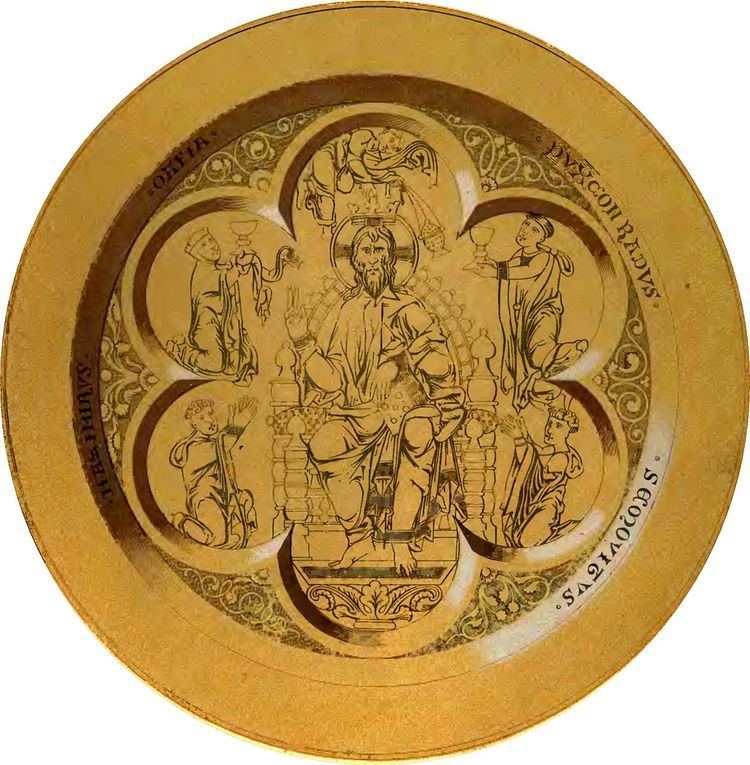 | ||
Polish halfshaven head (Polish: czupryna, podgolony łeb, łaszczówka) - is a traditional polish noble haircut, associated mainly with sarmatism, but worn by Poles in Middle Ages too. It's marked by shaving hair above the ears and on the neck on the same height, with longer hair on the top of the head. For hundreds of years it was a typical of Poles.
Contents
History
Origins of halfshaven head aren't clear: today is impossible to say how old it is. It was worn probably before the XII century to its slow disappearance in XVIII century. Earliest mentions of the "Polish halfshaven head" from Middle Ages were written by f. ex. an anonymous Franciscan in 1308, Wincenty from Kielcza (half of XIII century), and Austrian poet Zygfryd Helbling (end of XIII century) who was swearing on Polish and Czech influences. In Chronicles of Mierzwa (beginning of XIV century) from Cracow, we can also read that prince Leszek the Black (died in 1288) grew his hair to ingratiate himself with Germans, so it was a scandal both in his times and in times of chronicle. In graphic sources there are paten (half of XIII century) from Płock cathedral founded by Konrad Mazowiecki, and the paten founded by Mieszko the Old (year 1195) to the monastery of Cistercians in Ląd, and floor from Wiślica (years 1175-1180).
Wends
It's possible that not only Poles, but also other Slavs worn a halfshaven head. British franscescan Bartholomeus Anglicus in year 1235 wrote in his encyclopedia, that mostly all the Slavs, except Ruthenians and Slavs mixed with Germans and Latins, shave their heads. Bartholomeus, who lived in Magdeburg from several years know good the Slavic lands. By "Slavic lands" he meant the area from Saxonia to Ruthenia and from Dalmatia, Carinthia and Serbia to the Baltic Sea. About shaven heads, and dislike to beards, wrote also Saxo Grammaticus when writing about the temple of Arcona. He wrote that according to the common custom, only priests could grow long hair and beards. In a Saxon manifesto against Slavic pagans from year 1108 is mentioned that Slavs simulated Saxons during the attack by wearing their scalps - Saxons grew long hair, so Polabian haircut had to be very different: very short. So, the custom of shaving hair, in XIII century recognised as Polish, has to have bigger dimensions. The existence of czupryna amongst the Polabian Slav territories is obviously testified by many archaeological discoveries. Are for example: little bronze statue for Schwedt/Oder (X-XI century), Altfriesack Götze, a wooden statue from Altfriesack (VI-VII century), sitting statue from Gatschow near Demmin (XI-XII century), a little sculpture from Merserburg near Leipzig (X century). All the figures have short hair and halfshaven heads. There are also a metal fitting from museum in Oldburg and a wooden statue from Wolin (X century). Because of the corrosion, it is difficult to say if heads are shaven, but the hair are surely short. The most clear proof are the Sachsenspiegel illustrations - all Wends on the illustrations (in contrast with long-haired Saxons) have an short haircut, shaved at the ear-height.
South Slavs
In old Croatian tombs razors are often found too, but the problem about dimensions of halfshaven head custom in other Slavic lands than Poland is still not investigated. Another, but similar custom, is the so-called perčin (in Serbo-Croatian) or чумбас/чембас (in Bulgarian). It's a haircut that consist in shaving head from below, like in czupryna, but with leaving an braid of hair or something like ukrainian oseledets. This haircut probably arrived from Asia with Proto-Bulgars: for the first time, "shaven heads" were mentioned in the Nominalia of the Bulgarian khans. It was worn by South Slavs still in XIX century.
Types of halfshaven head
Among centuries in polish literature we can see an specialised nomenclature about czupryna. It's possible to distinguish various types:
